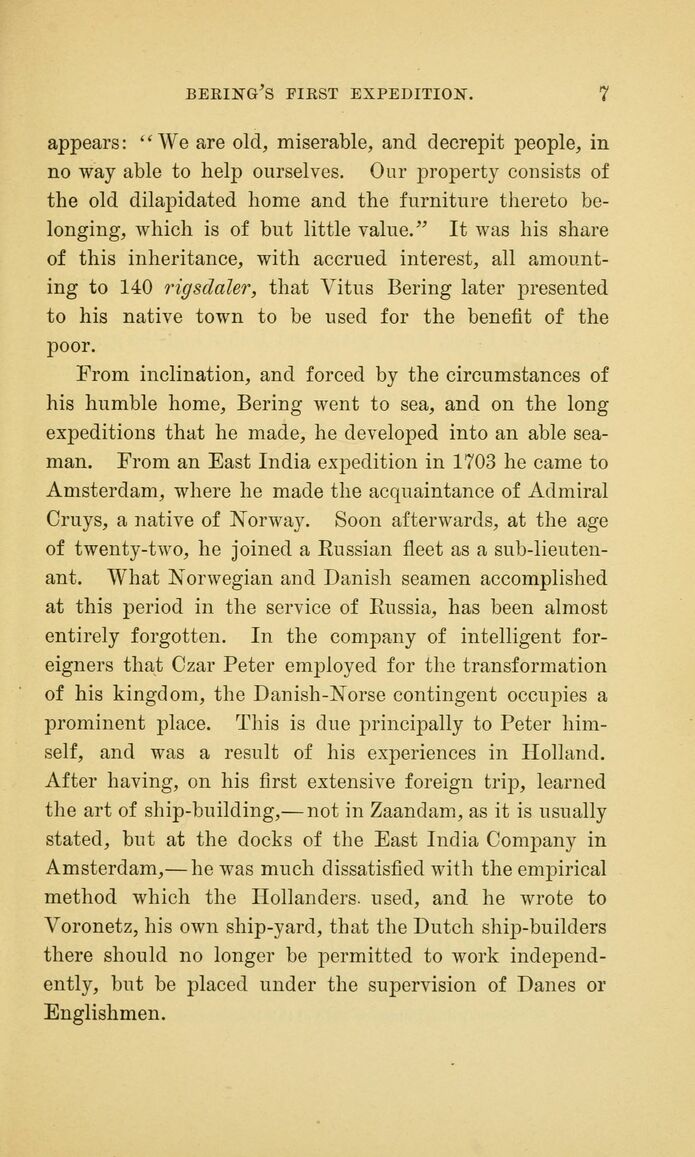
Full resolution (JPEG) - On this page / på denna sida - Chapter II.

<< prev. page << föreg. sida << >> nästa sida >> next page >>
Below is the raw OCR text
from the above scanned image.
Do you see an error? Proofread the page now!
Här nedan syns maskintolkade texten från faksimilbilden ovan.
Ser du något fel? Korrekturläs sidan nu!
This page has been proofread at least once.
(diff)
(history)
Denna sida har korrekturlästs minst en gång.
(skillnad)
(historik)
appears: “We are old, miserable, and decrepit people, in
no way able to help ourselves. Our property consists of
the old dilapidated home and the furniture thereto
belonging, which is of but little value.” It was his share
of this inheritance, with accrued interest, all
amounting to 140 rigsdaler, that Vitus Bering later presented
to his native town to be used for the benefit of the
poor.
From inclination, and forced by the circumstances of
his humble home, Bering went to sea, and on the long
expeditions that he made, he developed into an able
seaman. From an East India expedition in 1703 he came to
Amsterdam, where he made the acquaintance of Admiral
Cruys, a native of Norway. Soon afterwards, at the age
of twenty-two, he joined a Russian fleet as a
sub-lieutenant. What Norwegian and Danish seamen accomplished
at this period in the service of Russia, has been almost
entirely forgotten. In the company of intelligent
foreigners that Czar Peter employed for the transformation
of his kingdom, the Danish-Norse contingent occupies a
prominent place. This is due principally to Peter
himself, and was a result of his experiences in Holland.
After having, on his first extensive foreign trip, learned
the art of ship-building,—not in Zaandam, as it is usually
stated, but at the docks of the East India Company in
Amsterdam,—he was much dissatisfied with the empirical
method which the Hollanders, used, and he wrote to
Voronetz, his own ship-yard, that the Dutch ship-builders
there should no longer be permitted to work
independently, but be placed under the supervision of Danes or
Englishmen.
<< prev. page << föreg. sida << >> nästa sida >> next page >>